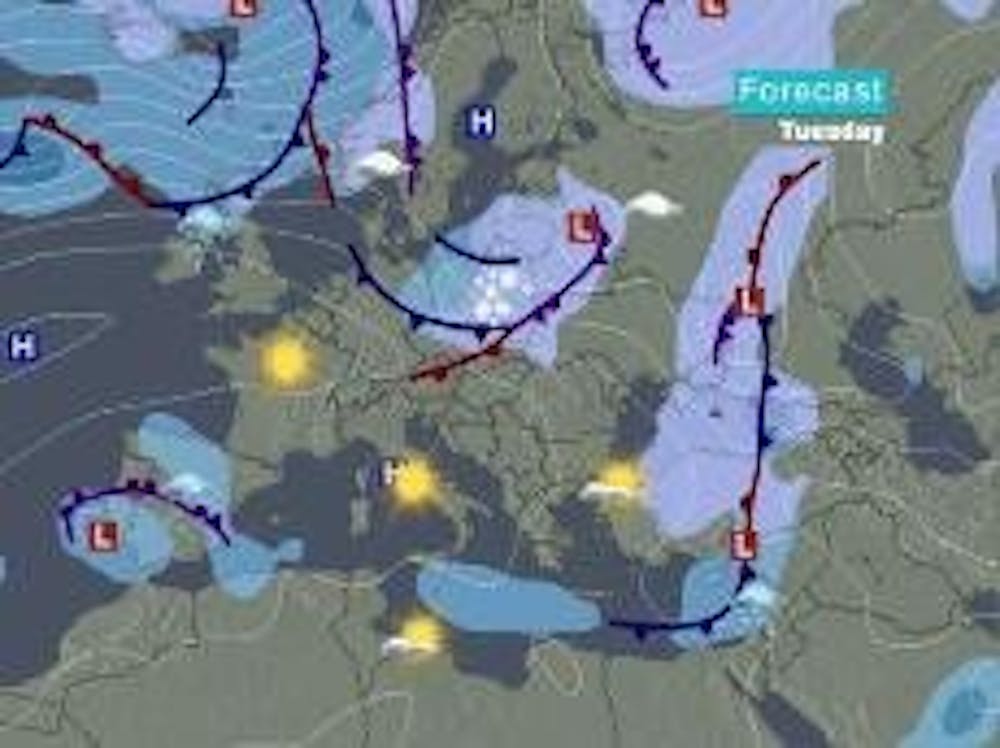A damaging storm system with extremely high winds killed at least 47 people across northern Europe last week, according to The New York Times. While AU students are studying abroad in the region, none of them have reported any problems resulting from the dramatic weather, according to Kristin Barbee, AU Abroad adviser in charge of some of the countries affected by the storms.
"[The AU Abroad office] has not received any messages from students or from our program directors regarding any issues resulting from the unusual weather in Europe last week," Barbee said.
Efforts to contact AU students studying in Europe and the program directors for both Brussels and Berlin went unanswered.
The storms swept through Germany, the Czech Republic, Poland, Austria, Britain, the Netherlands, Poland, France and Belgium Jan. 18, with winds of up to 112 mph in the Czech Republic and gusts reaching 123 mph in the mountains of Germany, according to the Times.
Karen Bushaw-Newton, a professor in the College of Arts and Sciences, said in an e-mail the storm was "a huge mid-Atlantic depression," which is not uncommon.
"This one was of a very intense magnitude," she said.
The intensity of the winds was especially unusual and unexpected, considering that they affected far inland areas, according to the Times. The storm caused power outages in more than 2 million European households, forced the cancellation of hundreds of flights from London and Frankfurt, prompted the German government to suspend all railway operations and caused hundreds of millions of dollars in damage, according to the Times.
Most of the fatalities caused by the storms were motorist deaths, as high winds caused falling debris and accidents, the Times reported.
This was the worst storm to hit Europe since 2002 and the highest death toll caused by a storm since 1999, when 120 people died during a wind and snowstorm, according to the Times.
"Proving that global warming is a major factor in the magnitude of any individual storm isn't possible," Bushaw-Newton said in the e-mail.
But she said global warming will most likely play a large part in storm activity and intensity within the next century.
"Over the very long-term global warming has the potential to impact storm events," Bushaw-Newton said. "In turn, certain areas (e.g., coastal areas) and ecosystems may be more vulnerable to change than others."
North Atlantic waters are warmer at this point due to a phenomenon called Atlantic Multidecadal Oscillation, which happens periodically. Eventually, this oscillation period will end and the North Atlantic waters will shift back to a cool phase, Bushaw-Newton said.





